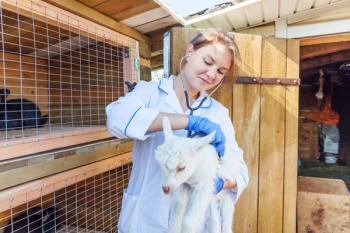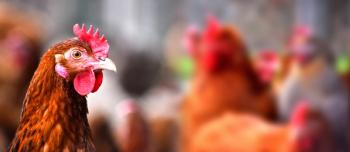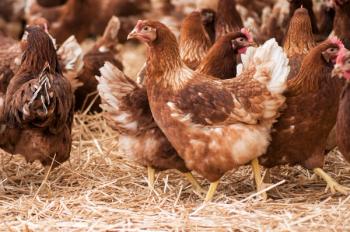
Anybody can deliver Key Performance Indexes (KPI's): What is our role? (Proceedings)
Anyone can and everyone does deliver key performance indicators (KPI's) to the dairy who is a stakeholder of the dairy either as an employee of the farm or as a business that is supplying materials or working for the dairy.
Anyone can and everyone does deliver key performance indicators (KPI's) to the dairy who is a stakeholder of the dairy either as an employee of the farm or as a business that is supplying materials or working for the dairy. This is the dairies "management team" and includes a diverse list of people such as the owner, on-farm manager, on-farm worker, veterinarian, nutritionist, corporate veterinarian, corporate service personnel, processor field man, and ***, and ***, and ***.
Key performance indicators (KPIs) are the benchmarks commonly used to measure the performance of a segment of the dairy.
• Some can monitor performance such as growth or production during all stages of the life cycle
• Some will monitor management areas such as sanitation by udder hygiene scoring or management of negative and positive energy balance with body condition scoring.
• Some monitor prevalence rates of health events such as SCC infection rates, fresh cow metabolic condition rates, or conception rates etc.
Dairies that have put together a comprehensive team have an owner that manages the team so that all the individual members have an opportunity to be successful and have developed a climate where the team can work together for the whole dairy. One way to achieve this is to make sure that everyone has the opportunity to have the monitors needed for watching their area of responsibility and still be aware of performance in areas that are not their responsibility (as if any areas of management do not impact all areas).
Our role varies from dairy to dairy. But much of the information the team will need has its roots in the cow side records established in the written protocols, so this presents a logical role for us to both gather and share information with other team members or aid in getting information recorded. And probably most significantly, we have a system that monitors record accuracy during our supervision of current cases.
There are two types of KPI's to consider because of the diversity of the team members and the diversity of information of value to these different people; hard count numbers individuals or rates of conditions. Tracking hard count numbers of individual animals that experienced a condition shows the work that has been done or that we are expecting in the key management areas such as dry cows, the calving pen, the fresh pen, the mastitis pen, foot care and heifer raising. For example:
Table 1
This type of report is far more valuable than the rate of some occurrence for those that work cow side because it presents information in a manner that has true meaning for workers. It indicates how much time workers will need to accomplish their work or the reverse, are the workers accomplishing the work that is expected?
Gathering these numbers can be as simple as keeping a log of treatments for a paper records system in a small herd or as complex as recording them in one of the dairy software program available and collating the numbers for a specified period of time for larger herds. With either a paper or computer system you need to decide what information has value, how to get the information into the records, and then plan what and how you want to collate it. Because we have a regular presence cow side, we can change our process regularly with the objective of continually improving efficiency and value.
The KPI's for the management team are usually rates of something instead of individual cows counts. Deciding what indicators are important for a management group of cows needs to be customized for a dairy. They will lead to a deeper study if not satisfactory. For example, pregnancy rate is a KPI for fertility. It is the sum of the breeding rate and conception rate. When the pregnancy rate is satisfactory we can move on and if it is not we can bore down into the two factors. An important consideration with selection of rates as the KPI's is deciding what the numerator and denominator will be and making sure other people that use the KPI know what the rate measures.
We first need to decide which KPI's are important for a management group?
• Where do we have predisposing factors that we are managing around?
• What are the dairies priorities?
• What indicator gives us best surveillance of the management group?
• What does a particular management team member need/want?
• Are there indicators one team member wants to make sure everyone else sees also?
• Does a KPI need to be added to monitor a management decision to change a process?
Table 2 Examples of Key performance indicators (KPI)
Is it proper to have cows that failed to cure subclinical with dry instead of having it with subclinical mastitis? Should milk fevers be with dry instead of fresh? Obviously there is no mandated plan that dictates what is proper for you.
Choosing the KPI's is dependent on priorities of the specific dairy for the specific management group and as monitors of the risk factors that we have identified in either the facilities or management decisions of the dairy and the emphasis the dairy places on the performance of that management group.
The final consideration is how we bore down on the KPIs that need it. The individual cow count KPI is relatively simple since we can count them and we can put a name/number on the individual cows.
The rates used to monitor the performance of our management groups is a more difficult decision because we need to decide what is included in the numerator of a rate and what is defined as the denominator? These require the input from the team in order to reach a compromise about what is KEY. When the records allow us to measure the numerator and denominator they are also adequate to bore down into the subsets included in the KPI to isolate management opportunities.
Satisfying both types of KPI's can be done simultaneously with summary commands for the management group that lists all the cows individually with the integrated information that allows tabulating rates or identifying individual cows.
Organizing the KPI's for either individual animal counts or calculating herd rates by management group does require a plan to simultaneously gather both categories of data. Once the plan is established it is just as efficient as only doing half the work. The value for the dairy and for us to put a face on the cows in a numerator for a rate is almost immeasurable.
As an example if 8 cows from a group of 40 cows that went dry with a high SCC and freshened with a high SCC; that would be an 80% cure rate or 20% failure to cure rate. If the goal was an 80% cure rate as a herd we are at goal and half our management team relaxes, but that still leaves 8 individual cows that need to be identified and a management plan developed for each. Half our team has the responsibility to manage these eight on an individual cow basis.
• Our goal was an 80% cure rate
• From dairy science and veterinary medicine we know a high percent of those will have a clinical case within the first 100 DIM if they were clinical the last lactation.
• We know what to expect as an impact on first service conception from this subset of cows
• We know what to expect as an impact on bulk tank SCC to have chronic sub clinical fresh cows.
• We know what to expect as an impact of a chronic sub clinical infection on the cows production.
Table 3 âSummary command limited to the eight cows that failed to cure identified and ready for management decisions as we bore down on their individual histories.
Conclusion
• The role of organizing the information needed by the team will logically fall to someone on the team with a broad base of involvement with records gathering.
• Cow side people and managers need a plan that helps for planning the work they do. They need information about numbers of whole cows that can be identified, not the rates of a condition from the groups of cows that hides the identities of individual cows.
• Management teams need as few indicators as possible that will measure the performance of each management group.
Newsletter
From exam room tips to practice management insights, get trusted veterinary news delivered straight to your inbox—subscribe to dvm360.




